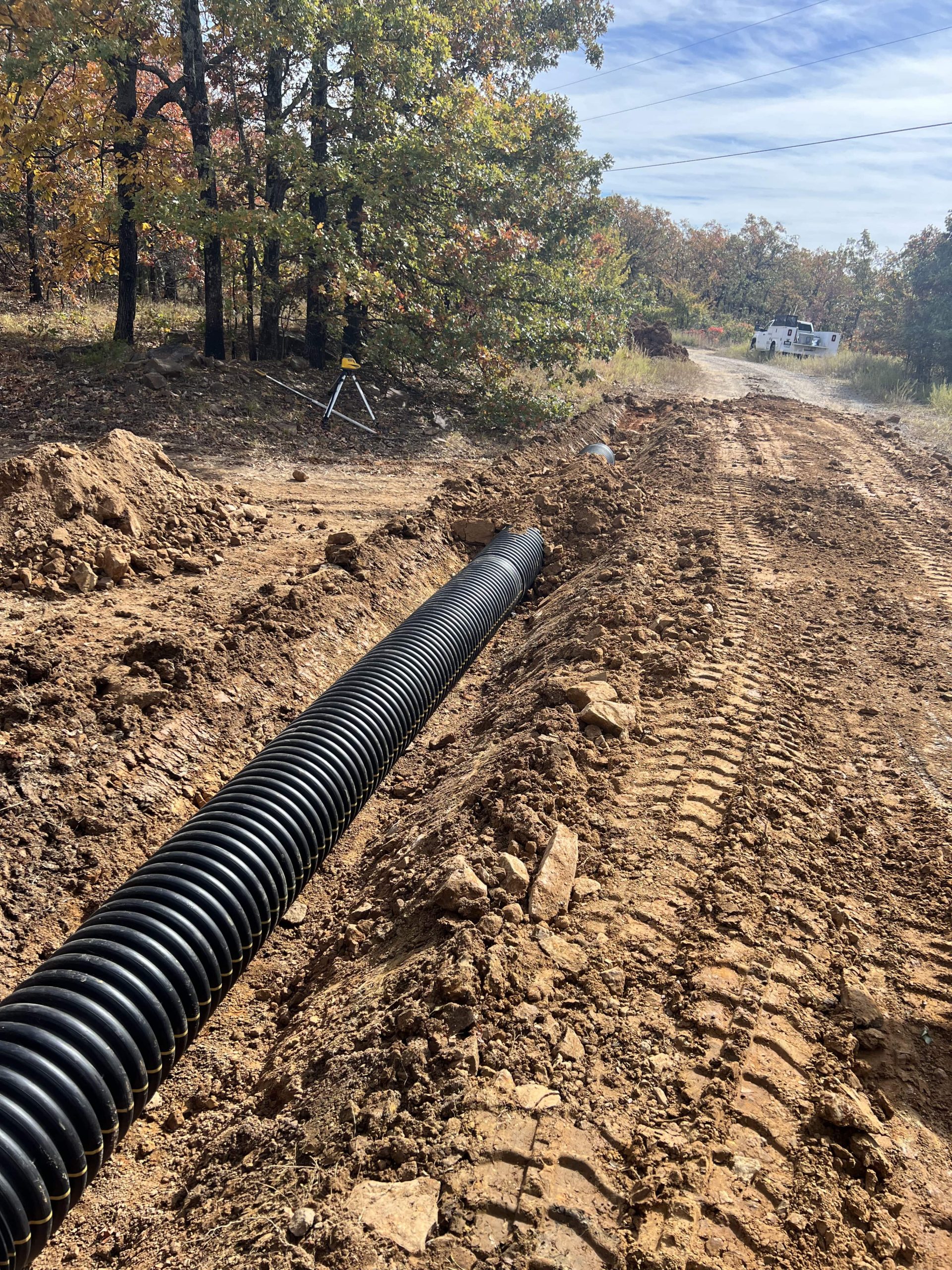Expert Culvert Installation for Resilient Facilities
Expert Culvert Installation for Resilient Facilities
Blog Article
Culvert Setup Made Easy: Step-by-Step Guide for Success
Mounting culverts might appear like a straightforward job, however guaranteeing a successful outcome calls for mindful planning and execution. From choosing the ideal culvert size to incorporating correct drain steps, each action in the setup process plays a crucial duty in the performance and long life of the culvert system. By following a methodical technique and paying focus to essential details, the setup can proceed efficiently, lessening potential problems down the line. Stay tuned to reveal the vital actions and factors to consider that can make culvert setup a seamless and effective endeavor.
Selecting the Right Culvert Dimension
Choosing the ideal culvert size is vital for ensuring reliable water flow and architectural stability in culvert setup tasks - Pad Construction. The size of the culvert directly impacts the flow ability of water via the framework. A culvert that is also small can cause flooding and overflow, while one that is also big may lead to decreased water rate, potentially causing debris buildup and clogs
To identify the right culvert dimension, elements such as the watershed area, height circulation rates, and hydraulic effectiveness demand to be carefully thought about. Computations based upon these criteria assist in picking a dimension that can sufficiently manage the predicted water volume while reducing the threat of obstructions and structural failure.
It is vital to speak with engineering standards and standards to make sure that the chosen culvert dimension fulfills the task needs and neighborhood regulations (Pad Construction). By selecting the best culvert size, project managers can maximize water circulation, protect against possible problems, and improve the general effectiveness and longevity of the culvert installment
Preparing the Installment Website
Reliable culvert installment demands meticulous prep work of the installment site to make certain optimum architectural support and performance. Prior to commencing the setup process, it is essential to clear the website of any kind of debris, plants, or obstructions that could restrain the culvert's placement. Guaranteeing a degree structure is essential for the proper positioning and security of the culvert. This might entail rating the site to develop a smooth, also surface area that can adequately support the weight of the culvert and any anticipated lots. Furthermore, correct compaction of the soil beneath the culvert is needed to avoid settling or changing gradually.
Furthermore, it is necessary to think about aspects such as soil composition, groundwater degrees, and environmental influences when preparing the installment website. Conducting a complete website assessment can aid determine any type of possible obstacles or dangers that might affect the culvert's performance. By putting in the time to prepare the installment website appropriately, you can help guarantee a successful culvert installation that fulfills architectural requirements and guarantees long-lasting capability.
Positioning the Culvert Appropriately

The grade at which the culvert is positioned is essential for keeping an appropriate incline for water flow. In addition, the culvert must be oriented correctly to make certain that the inlet and outlet are in the correct places. Pad Construction.
Backfilling and Condensing the Dirt
Proper backfilling and compaction of the soil around the culvert is necessary to make sure stability and protect against potential issues in the future. As soon as the culvert is appropriately positioned, the following critical step is to backfill the area around it with ideal material. The backfill product need to be devoid of rocks, particles, and natural issue to avoid damages to the culvert. It is recommended to use granular product such as sand or gravel for backfilling, as it supplies excellent drainage and compaction homes.
After putting the backfill material, it is necessary to compact it in layers of uniform density. Utilizing a compactor or a mechanical tamper, small the soil gently to prevent harming the culvert. Compaction helps in minimizing the possibilities of negotiation and makes certain consistent support around the culvert. It is vital to compact the soil uniformly on all sides of the culvert to preserve its structural stability.
Correct backfilling and compaction not just give security to the culvert however additionally aid in protecting against dirt disintegration and maintaining the long life of the culvert system.
Guaranteeing Appropriate Drain Assimilation
Integrating efficient Pad Construction drain services plays a crucial duty in the overall performance and longevity of culvert installations. Correct drain integration is essential for taking care of water circulation, protecting against erosion, and making certain the structural integrity of the culvert system. To accomplish this, it is vital to create a detailed water drainage strategy that thinks about factors such as the volume of water anticipated, the topography of the location, and the sort of soil existing.

Furthermore, incorporating features like erosion control steps, such as riprap or plants, can additionally improve the performance of the drainage system. By very carefully planning and carrying out these water drainage options, culvert setups can operate efficiently and endure the test of time.
Conclusion
In conclusion, proper culvert installation is important for keeping efficient drain systems. By picking the right culvert size, preparing the setup website, placing the culvert properly, backfilling and condensing the soil, and making certain correct water drainage integration, success can be achieved. Following these steps will aid ensure the durability and effectiveness of the culvert, ultimately adding to the general success of the water drainage system.
Report this page